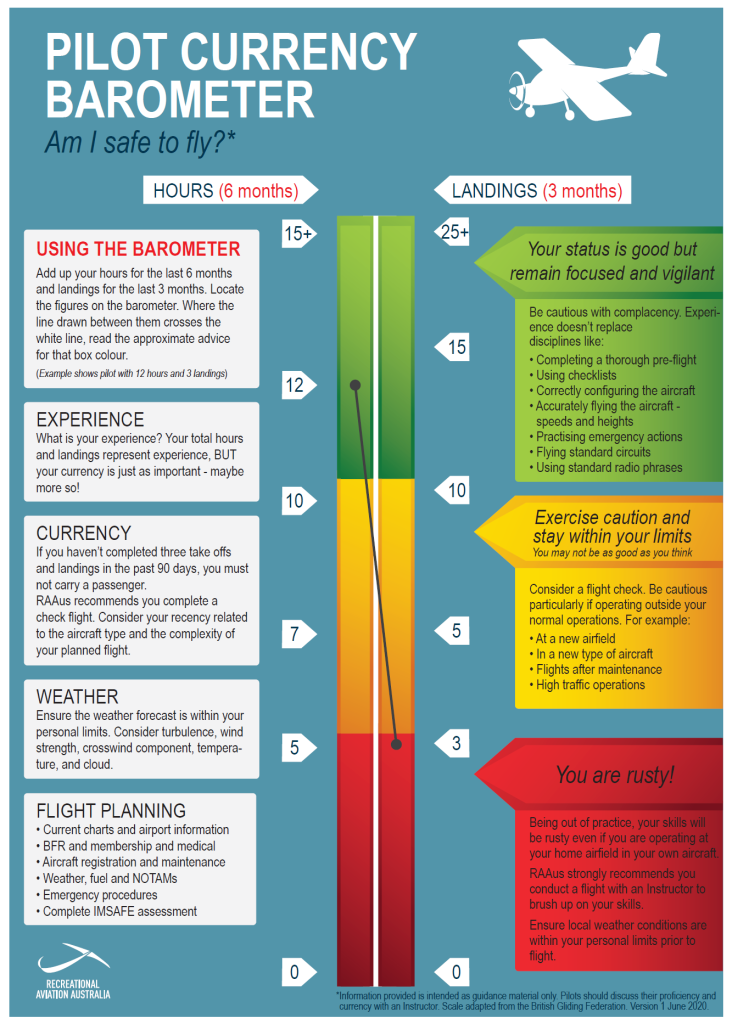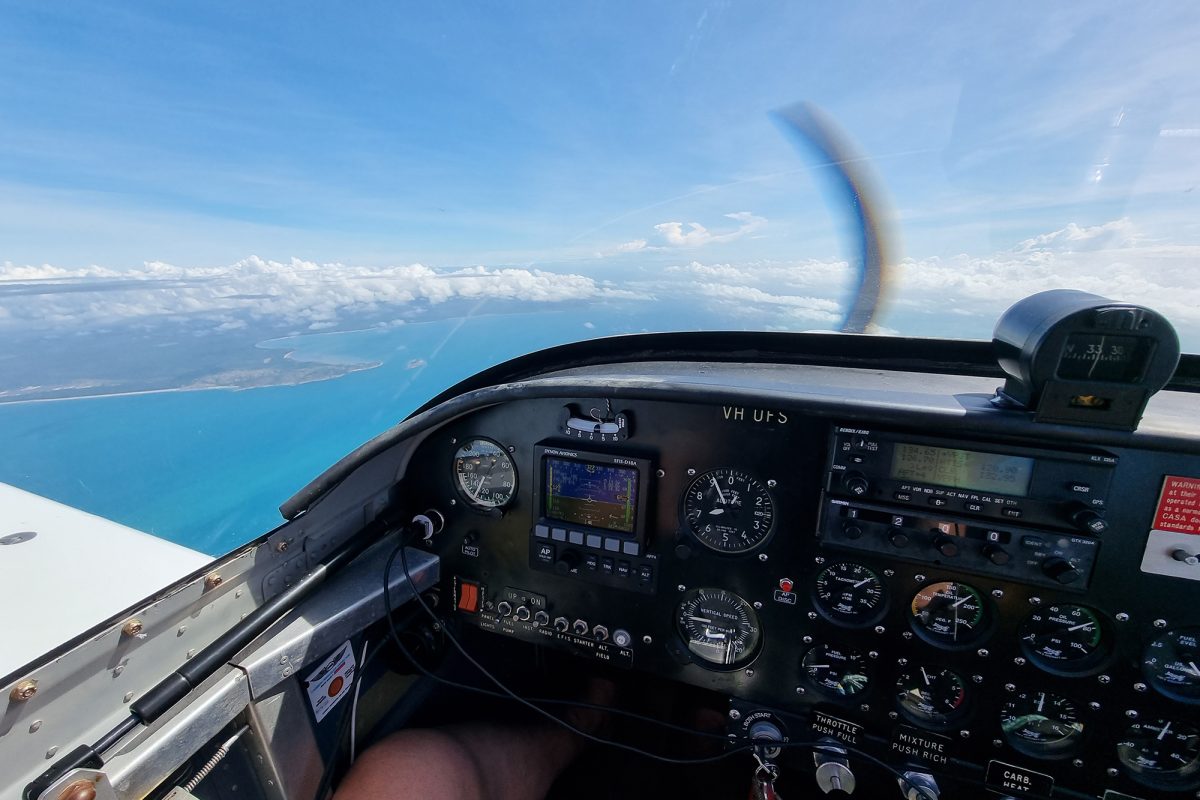The COVID-19 pandemic has radically changed our world in many ways for many people. As the RAAus Head of Flight Operations, part of my responsibilities included monitoring the ever-changing restrictions and considering the effects they may have on our flying members and flight training schools. I was also responsible for the management of future risks related to an eventual return to flying and flight training once restrictions had eased.
Luckily, I was not alone. The RAAus team offered amazing support to one another during this challenging time. We were kept busy just keeping up with the rapidly evolving situation.
Increasing this workload, which was higher than any time I can remember in my almost 10 years at RAAus, was the decision to protect our staff by moving to working from home for the whole office. While three of us already worked the majority of our time from our homes in New South Wales, Queensland and Victoria, the rest of the team were generally in the office. We organised daily video conferences for the whole team and worked hard to make sure everyone felt connected. I learnt a lot about my fellow RAAus team members, meeting their children, grandparents, partners, cats and dogs. We vicariously explored each other’s bookshelves and rooms and there were unintentional and deliberate video conference presences (a Zoombomb I think is the new term) by family members and pets. We really connected as a team in a meaningful way during this time and recognised this experience as something unprecedented for both ourselves and our members.
We spent time researching the restrictions, our obligations as an organisation and answering a wide variety of member questions including; Can I fly? Should I fly? What does a specific state require? Can I conduct flight training? What effect does physical distancing have in a cockpit? What storage requirements apply to an aircraft? Can I fly my aircraft privately? Am I going to be fined if I drive to the hangar to maintain my aircraft or to prepare my aircraft for storage? Throughout this time, as we advised members in our weekly E-News broadcasts, many of these questions were beyond our ability to answer, as they related more to health and safety rather than aviation safety and were state or region specific.
From a personal perspective, my instructor renewal (and therefore my BFR) was due by 7 April 2020, for which I received an automatic COVID-19 extension for an additional three months, which really took the pressure off. I started contacting Pilot Examiners (PE) to complete my flight review. I could have completed this renewal with a local CFI, however using a PE is an additional requirement the Flight Ops team imposes on itself in recognition of a higher expectation and proficiency for flight training.
I try to complete my flight reviews with different PEs wherever possible. In 2018, I completed a flight review in a Tecnam P2008 with PE Ed Herring in South Australia. While I was there, I completed Professional Development sessions with CFIs and Instructors. Obviously this was not going to be possible for the review this time. Some of you may also recall I wrote an article for our COVID-19 reference resources on the RAAus website, about my decision to choose not to fly at the height of the COVID-19 restrictions despite that fact I had no travel issues getting to the airport.

I contacted CFI and PE Sheldon Jones of Merit Aviation, as he often travels through Temora with pilots and students. We arranged for a Thursday afternoon with perfect late autumn weather. Sheldon advised he wanted me to deliver briefings on Practice Forced Landings and Emergencies in the Circuit. I brushed these up as I don’t get the opportunity to deliver too many flight briefings, being kept pretty busy with RAAus work. Before the briefings, we had to consider the appropriate COVID-19 protocols and we discussed how we were going to manage the flight review process. This actually started with the first phone call, we discussed how we would manage Sheldon attending my office (which is in my home), how we would manage the cockpit interactions by using our own headsets, using my aircraft which is only flown by me or my husband, using hand sanitiser, wiping down common surfaces with disinfectant prior to and after the flight and much more. Check out the RAAus COVID-19 resources for more information about a range of these protocols:
www.raa.asn.au/our-organisation/covid-19-updates/
We completed the RAAus paperwork to record the who, what, where, when and how of the interactions. Of course, we also spoke in detail about a range of organisational challenges including COVID-19 considerations, standardisation issues and any opportunities for collaboration. Briefings complete, we walked the 20 metres or so to my hangar, as I live on an airport at Temora. At this stage of the flight review process, I was pretty relaxed, I regularly practice in cockpit patter on my long-suffering husband and I always enjoy flying with our PEs, as we generally collaborate well. Pre-flight completed, I walked over to Sheldon with my Hours and Maintenance (HAM) document and discovered the annual on my aircraft was overdue by 8 days! Once I finished kicking myself and apologised to Sheldon, we arranged for the following Monday as Sheldon was back with another pilot completing IFR training.
This would give me the entire weekend to complete the annual, which included some work on replacement brake pads and other regularly scheduled items. Monday arrived as one of those foggy, misty, rainy cold miserable days that only a winter in Temora can provide and even though you would think a flight under IFR is tailor made for these conditions, the freezing level was forecast as only 4000’, insufficient for a flight from Moruya to Temora. On to Wednesday as a backup (we were starting to alphabetise our plans), so this one was plan C. Of course, Wednesday was a repeat of Monday and at the time of writing, I still haven’t completed my flight review.
I am not too worried about my proficiency at the moment, my usual practice is to aim to get a flight for an hour every weekend as a minimum, where possible. During this flight I don’t just take off, do a local flight to see the sights and land. The flights generally include a practice session to review a specific flight regime. Whether I try to complete the most accurate steep turns possible, with accurate maintenance of height, a session on short field landing practice, practicing crosswinds, stall recognition and recovery review or practice forced landings, I generally try to achieve a specific purpose with these weekly flights. Of course, sometimes we just get together as a group of aircraft and go for a flight to a nearby airport for a $100 hamburger, which is also fun. The proficiency part of our flying, while important on an ongoing basis, is also why during the height of the COVID-19 restrictions and dealing with the immediate challenges, RAAus was already looking ahead. We were considering the potential risks introduced by the return of our members to flying after long breaks imposed by COVID-19. We reached out to our sister organisation GFA as they had developed a Pilot Currency Barometer to assist their pilots in assessing if a flight check with an Instructor was appropriate. The GFA tend to operate with periods of low activity during winter, as opposed to the peak summer gliding season, with awareness of significant breaks between flights. We felt adapting their Currency Barometer for our members might be a useful tool for our members to work out if they should be completing a flight with an Instructor before launching off on their own.
This is not intended to be a sob story, although I really hope I can get my review completed soon. Rather, it is intended to be a cautionary tale about the unintended consequences or effects of COVID-19 restrictions, how easy it is to overlook something important like an overdue annual, even if only by 8 days, the importance of using and checking paperwork and keeping ourselves safe when we finally get to return to flight. We expect the impact of COVID-19 will remain with us for a significant time, but encourage our members to support our Flight Training Schools, organise a check flight with an Instructor and stay safe and well.








